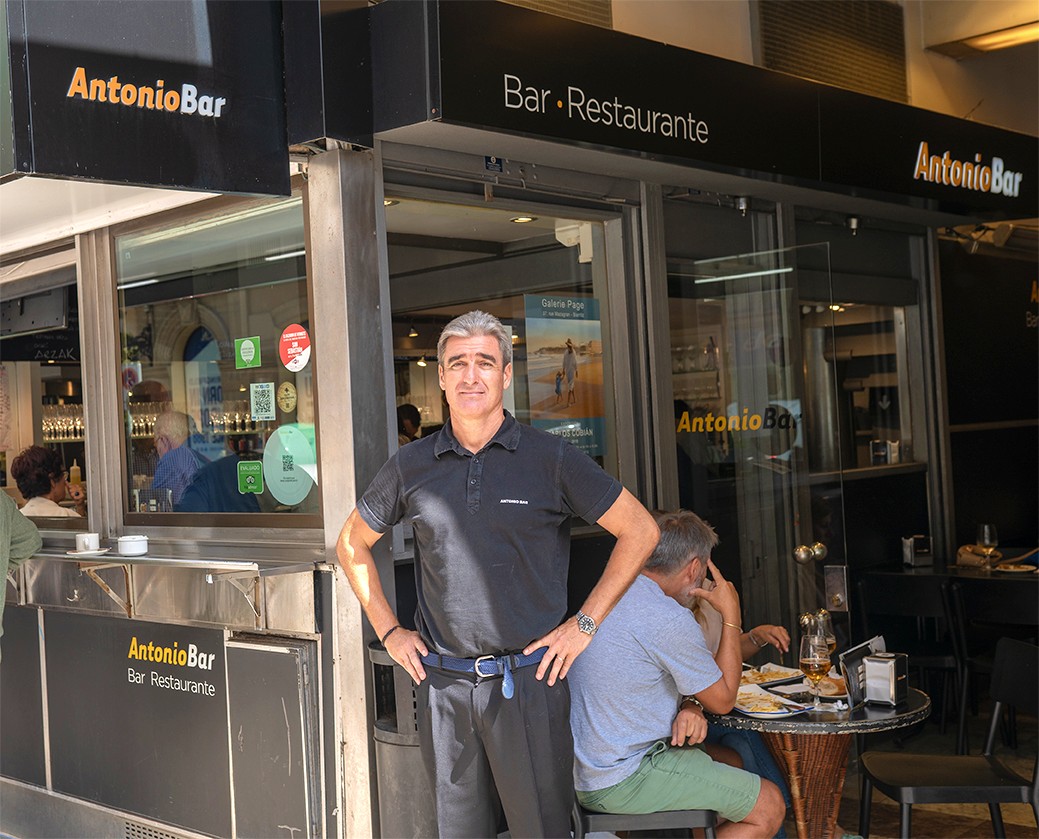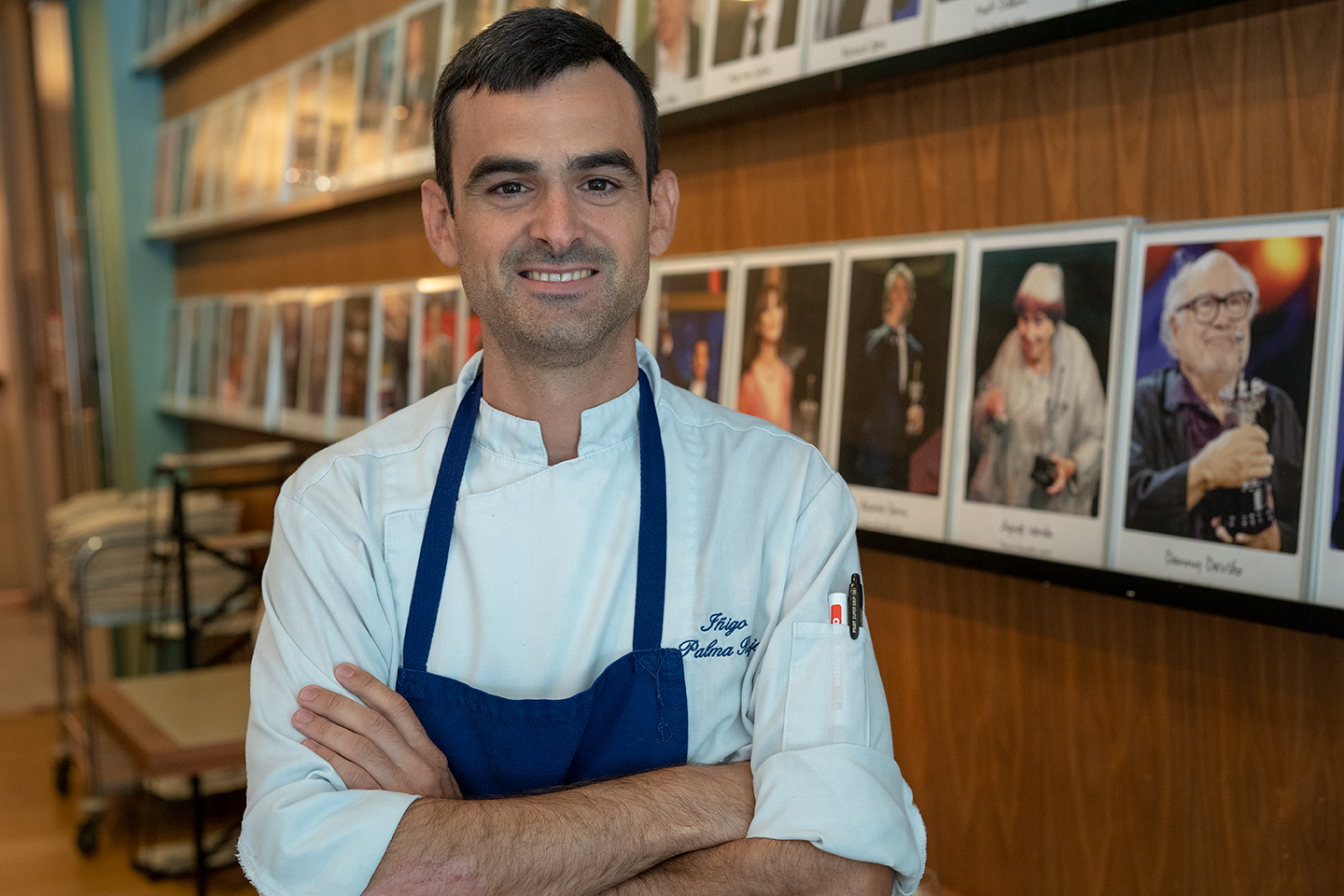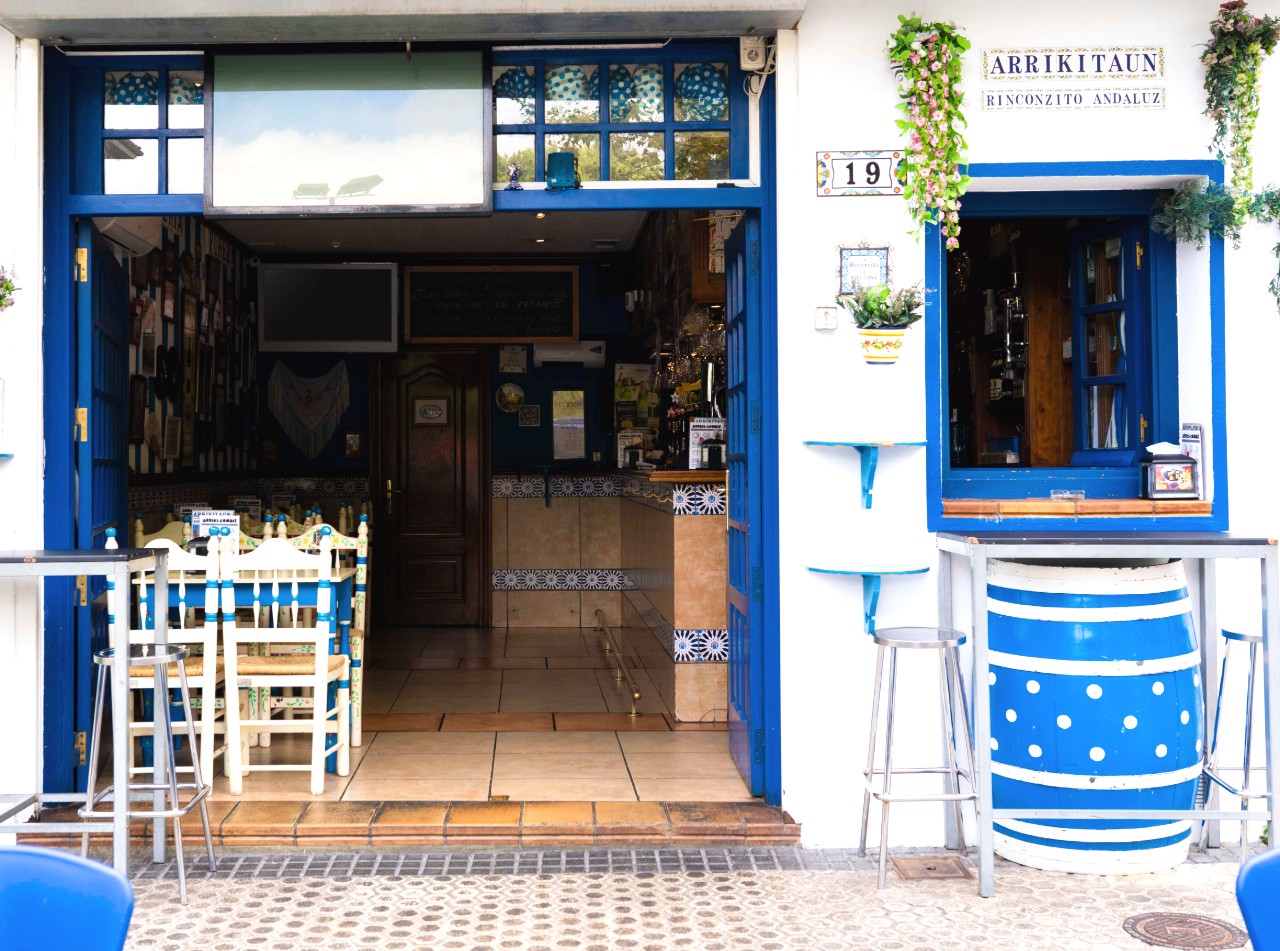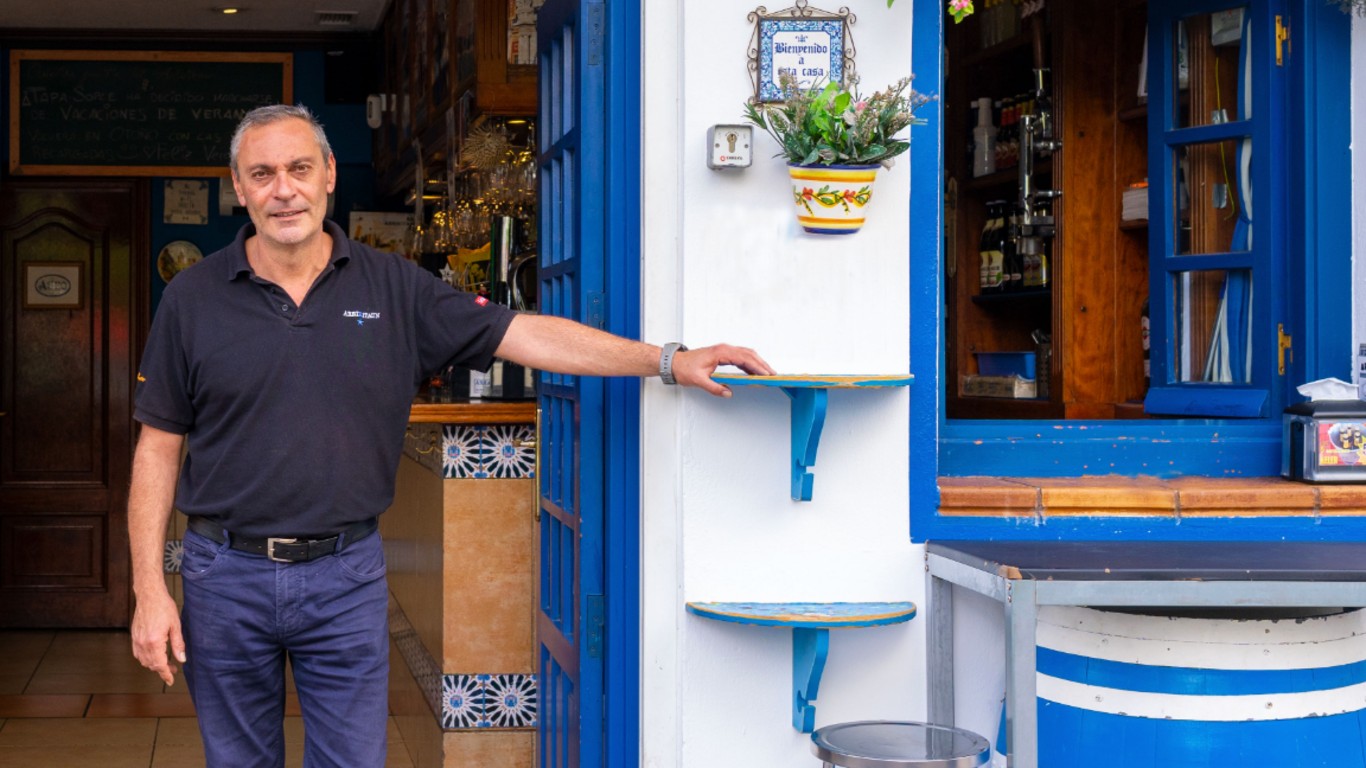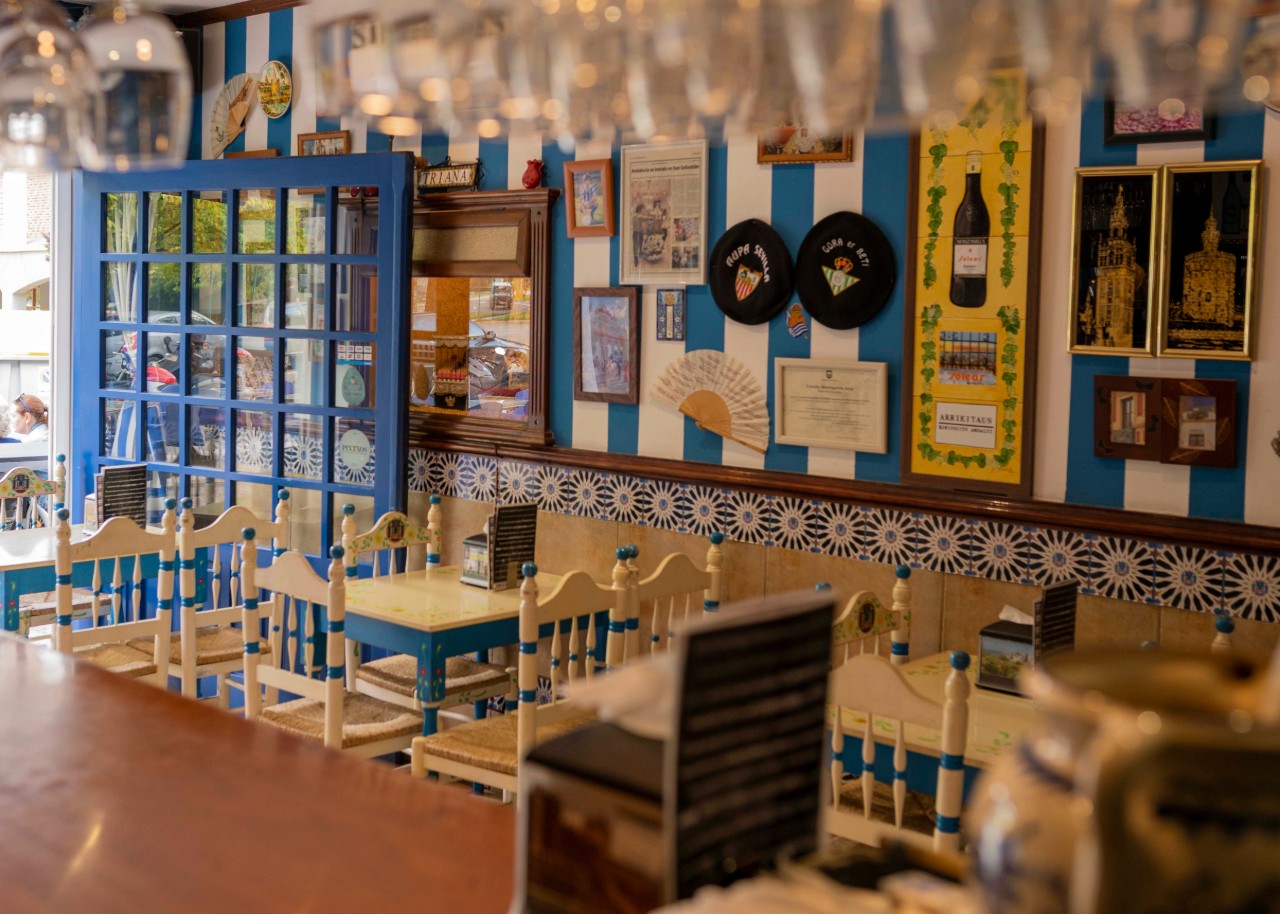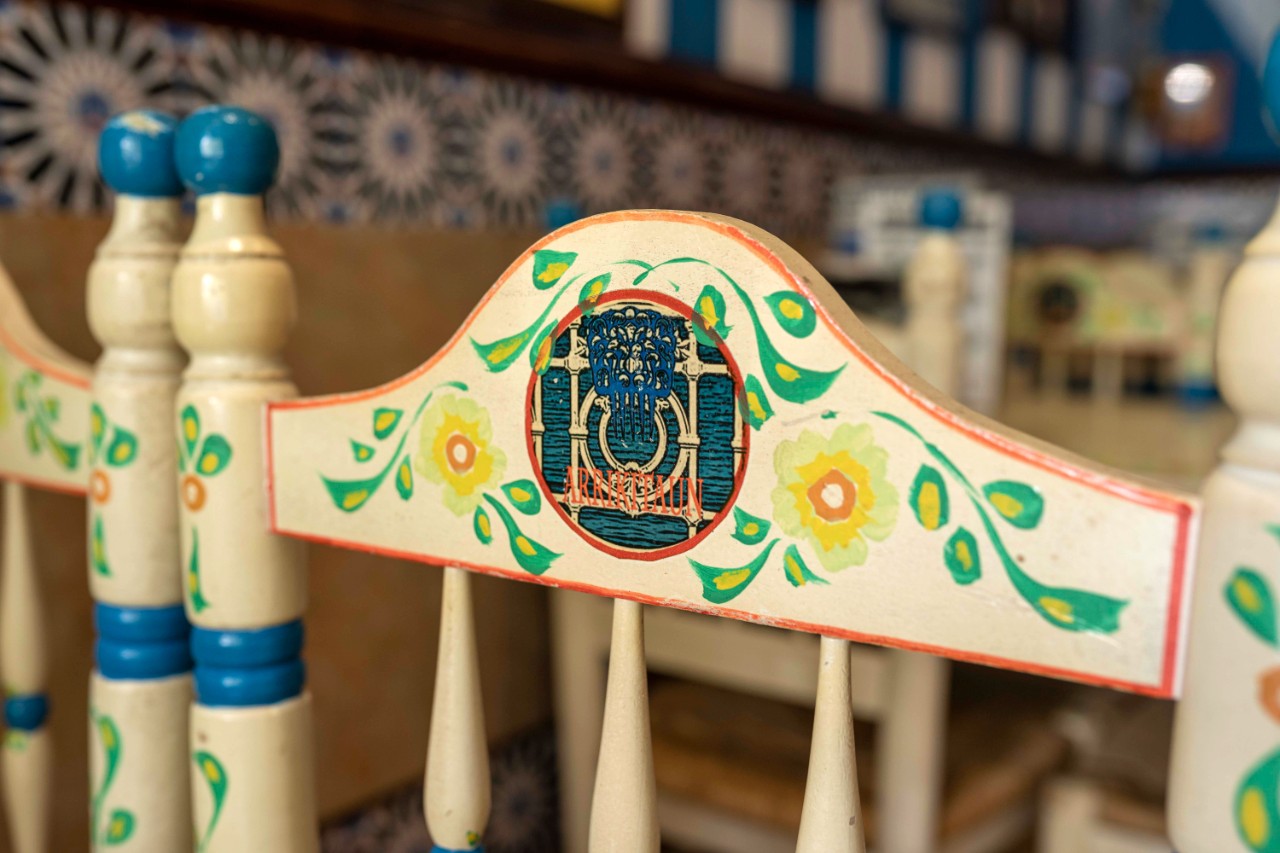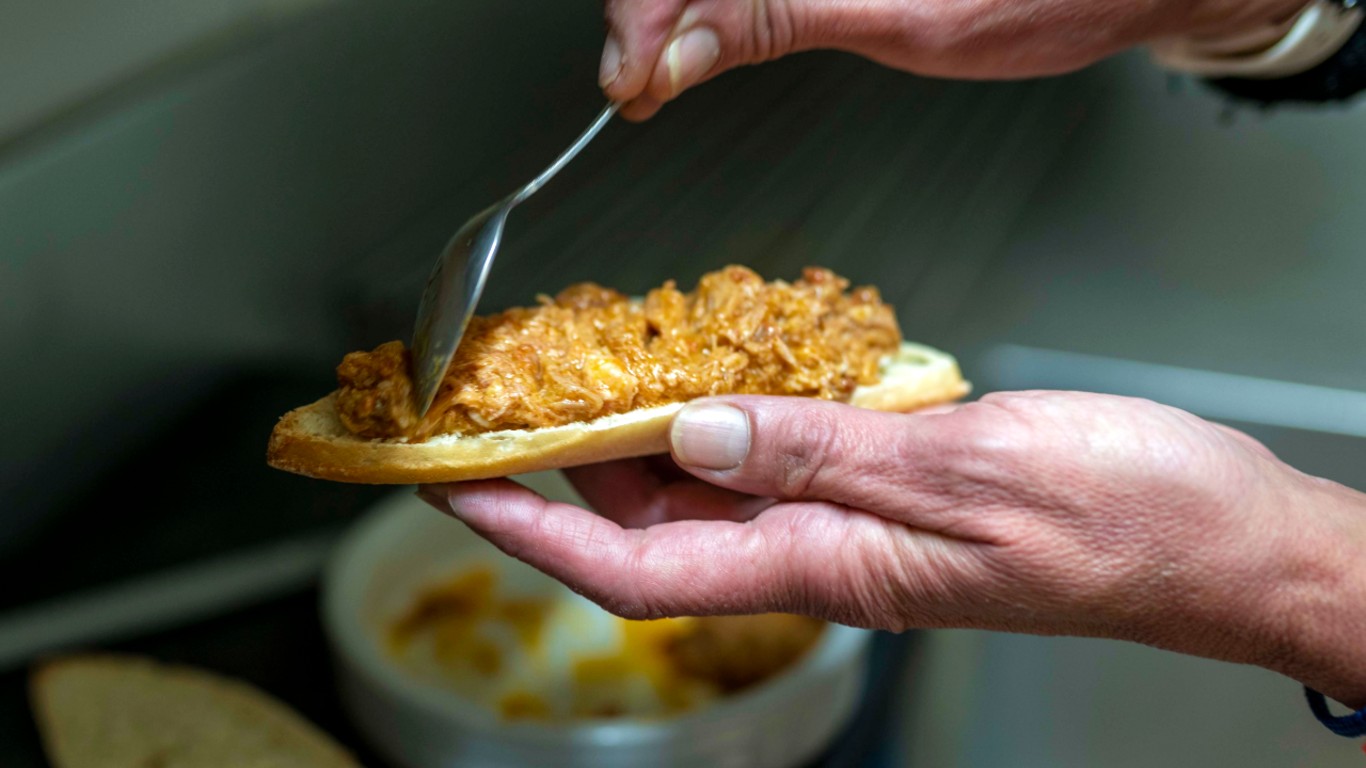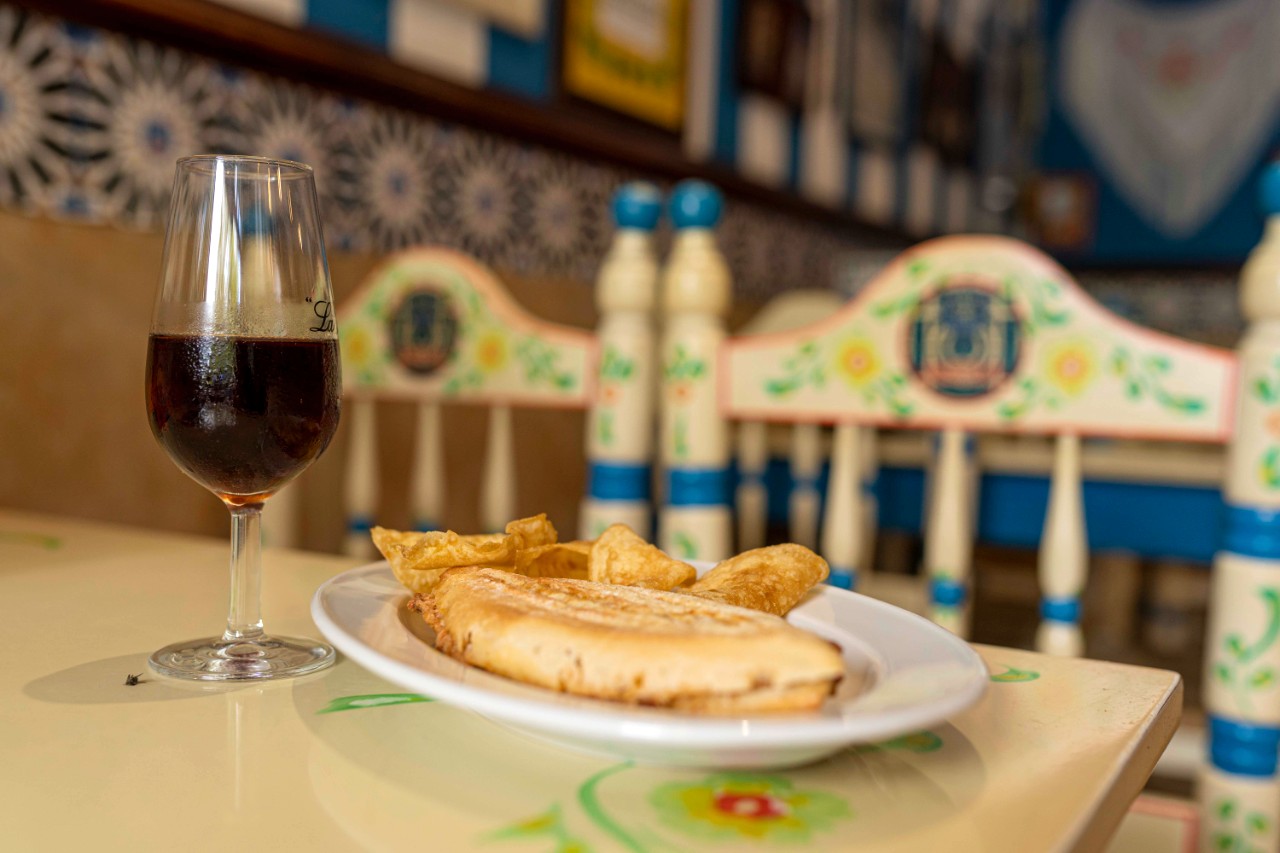Antonio bar is one of the most emblematic venues in San Sebastian downtown, but it is also , for many people, a place to discover. It has been almost 25 years since Humberto Segura and Ramon Elizalde took over this business, and since then they have built up a work-based reputation. It’s hard to get a greater return from such a small place, even if Antonio bar seems smaller If you don’t come in. Humberto will discover us some of his secrets.
- When did the Antonio bar open?
- This bar first opened on July 7, 1969. It was opened by Antonio Royo, a well known face in hospitality in San Sebastián. He retired in ’94, and sold the business to Ramon and me. We did a makeover, because the tavern looked just like the first day of opening, and we reopened in the spring of 1995. We took this tavern because Ramon was working in Basque Bar, myself at Hotel Europa, and a lot of customers encouraged us to take over the Antonio. We had already worked together, we were friends, and everyone told us that Antonio’s was the best customer base in whole San Sebastián, thankful and well established, and that the bar was a historical one, with a good reputation due to its pintxos. It didn’t take us long to realize that everything they told us was true.
- Who was in charge of cooking at that time?
- We didn’t want to take any risk, so we kept both the original menu and the chef, which had been in the tavern since the opening! We thought it wasn’t time to shake things, although we did have a lot of ideas. We worked very well from the beginning, and soon we hired another chef and one waitress, and then we started changing some things in the menu.
- When did you take the plunge?
- In 2000, after a lot of patrons suggested it to us, we made improvements and put a dining room in the basement, moving the toilets down as well. We hired a new chef, Iñigo Tello, who came from Zuberoa Restaurant, and he did help us to change the menu. So we started to grow.

- Your current chef is José Ramón Ezkurdia: what did his arrival mean to you?
- In 2013, Iñigo wanted to leave, so we called José Ramón Ezcurdia, chef of Urepel restaurant, that went out of business in late 2012. First he wasn’t sure, but after a long talk whereby we told him that this project could satisfy him, due to close contact with a grateful clientele… I don’t know how, but we convinced him. Then we reshaped the menu, updated it, and here we are.
- You have a really small venue, but you put a strong fight!
- We work well. We have some typical dishes, like the anchovy pintxo, that we have been delivering for 50 years. It was a pintxo created by Antonio, and we have refurbished it.
- There are many who don’t know you have a dining room in the basement.
- That’s right. It is not very large, just six tables.

- And a very special private room in the storage: sure enough, a lot of deals have been clinched there!
- We only book it to our friends and regular customers, and yes, it’s a room with an unique environment.
- How would you define your gastronomic offer?
- We tried to work with seasonal product. The best possible service and the best raw material. Our motto has always been that we are neither the smartest nor the most handsome: we want to be the hard workers, and even if people jokes about it, we say we’re always learning. We have been here for almost 25 years, and we always try to improve our proposal. I think there are few places in San Sebastian where they can make a coffee as good as ours. And we have been able to be known from our way of pulling beer, using a brand (Cruzcampo) nobody liked.

- Michelin-starred chefs in Gipuzkoa chose three of your pintxos (“Antxoa”, “Crujiente de Rabo de buey”, and “Ravioli de Langostino en salsa de Martini”) to be in the list of the 99 best pintxos in San Sebastian: What did this acknowledgement mean to you?
- We were recently asked by the Basque Public broadcaster ETB to show them our three best pintxos: but we told them we’d bring them 3 of the 20 best pintxos we have. If we’re going to offer a pintxo, it has to be good. Inasmuch as we don’t like, and especially if it’s not sold, we take it away. Our pintxos are in the counter because they are sold, people like them. In fact, those three are now the ones that sell the most, and by far, the “Ravioli de langostino en salsa de Martini”. That is a dish from our restaurant, where we make it with lobster, and we decided to make a cheaper version for the tavern. When a dish is very successful, we try to get the pintxo version, as it is with the “Igeldo” pintxo, which ensued from our tomato and white tuna belly salad.
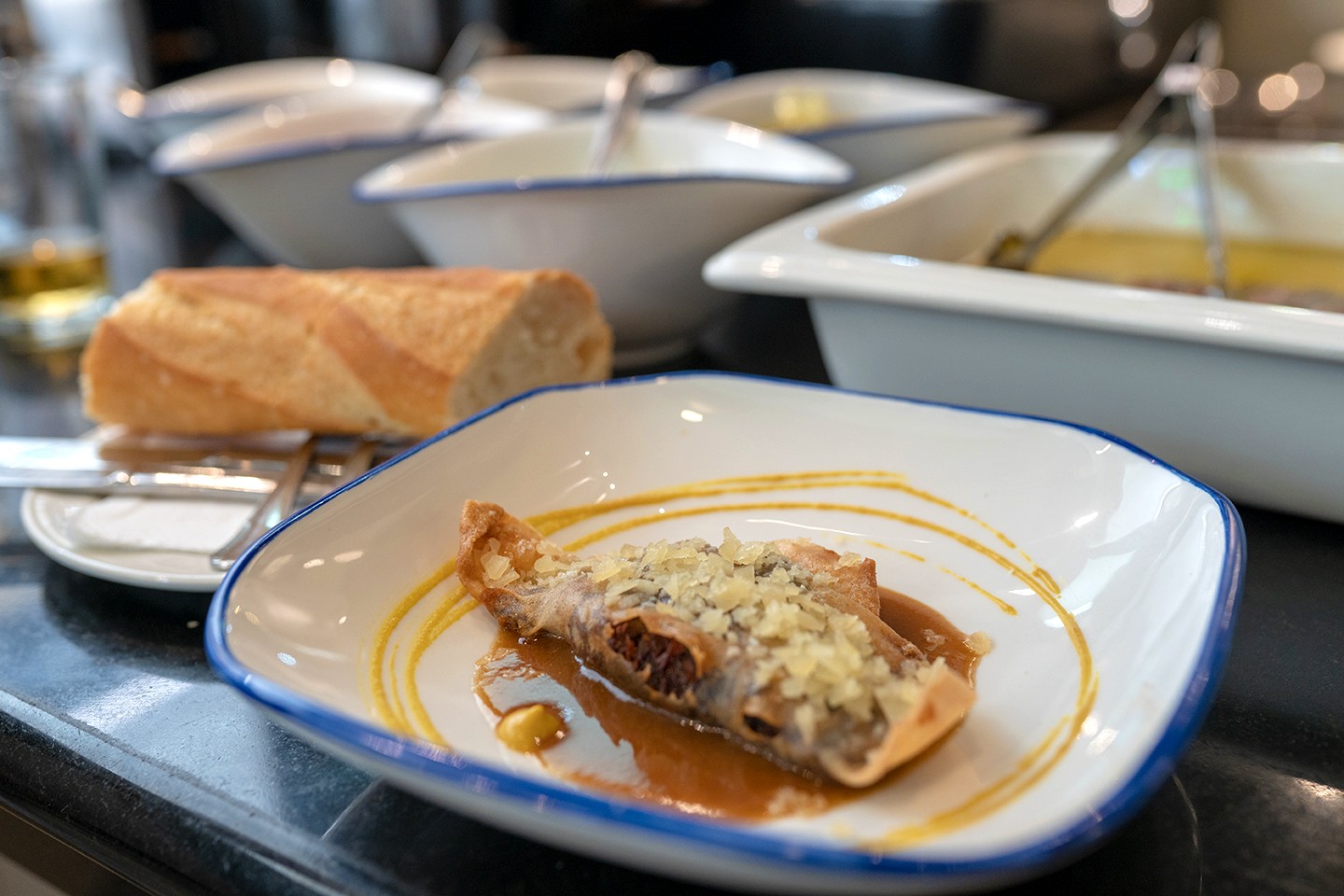
- You make a virtue from what could be a handicap: a small bar counter. Your bet is to cook pintxos at the time.
- The secret of making good pintxos is, for me, to cook them at the moment. We have the tavern divided in two partes: on the right side, we serve the pintxos of anchovy, salmon, octopus, smoked sardine, beef jerky, shrimp with vinaigrette…we serve between eight and ten pintxos there, toasting the bread at the moment. You have to wait 3 minutres, but you get a fresh pintxo, and that makes the difference. Inside the kitchen we have an already prepared basic recipe, but we also assemble the pintxos at the moment. Some people get nervous waiting, but then they see the difference too.
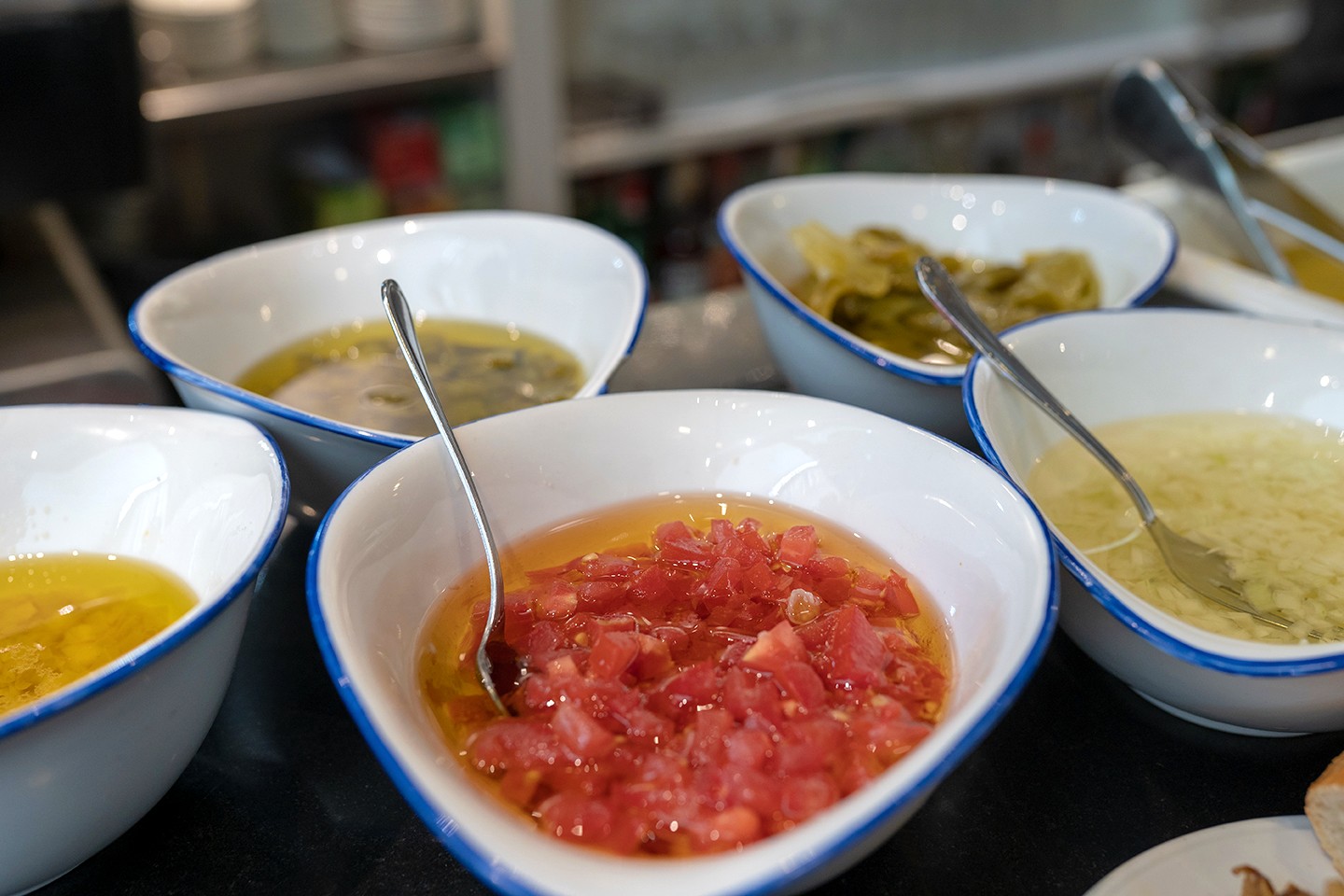
- The potato omelette is another one of your signature dishes
- We used to make one a day, and now we do five. 3 in the morning and 2 in the afternoon. They are big, we make 30 pintxos from each. We never thought about it in a marketing way, but it’s true however that having a limited number works, because it raises expectation.

- How easy is finding a good product?
- After so many years, it happens that our suppliers have became our friends. Since we started, Cárnicas Goya bring us the meat. I call Josean directly, and chops the meat for us. We also have lunch together once or twice a year, to agree on what we can improve, or what we can change. The same with our fishmonger, who is Ivan Sotero. We have moved to friendship, and he always tries to find the way to help us. In fact, there are times when some different supplier comes to us offering the same product but somewhat cheaper. Buy I don’t wan’t to lose the relationship with a provider who takes care of us. An this applies to all vendors, as if he’s the toilet soap provider. It’s two-way loyalty.
- In view of space limitations in the bar, team coordination must be essential.
- We do not only retain loyal to suppliers, we also retain employees. This is a good place to work, because we close Sundays and Holidays, which helps to have staff stability. Nobody leaves here.
- How many workers are you on the staff?
- We’re 10.
- Will you arrange any special celebration to mark your 25th anniversary?
- That will be difficult, because we have taken over the Barandiaran tavern, and we want to open it for Easter next year. We will try to organize it in the same way as Antonio bar’s, but more spacious and with a terrace. And keeping our stress level in mind, I think it doesn’t give us time to run anything for our 25th aniversary.
